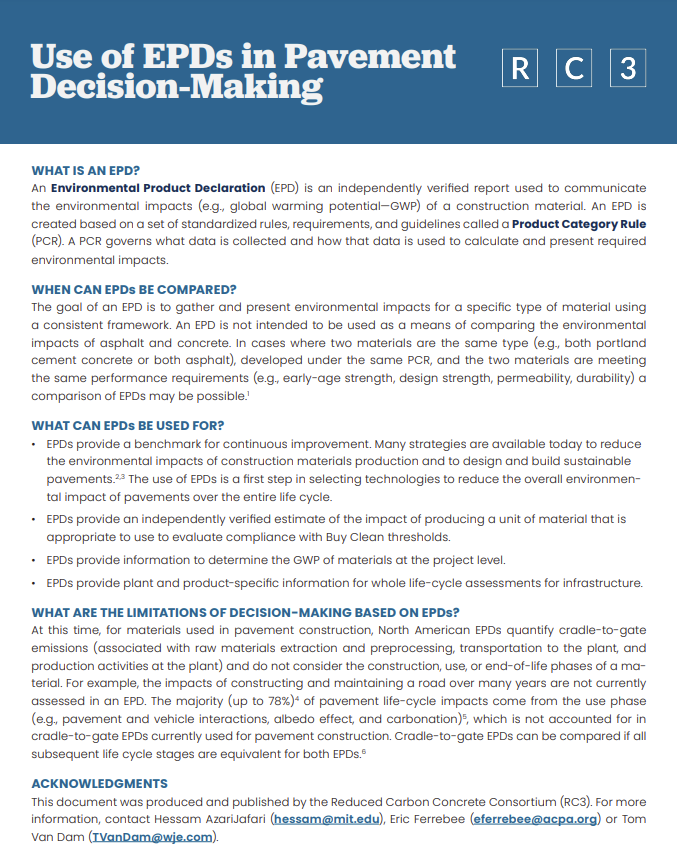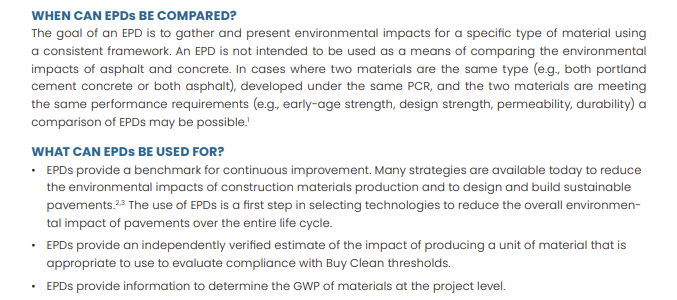A new one-pager created by the Reduced Carbon Concrete Consortium (RC3) covers the utility of environmental product declarations (EPDs) for pavement decision-making.
Key takeaways:
- EPDs are not intended to be used to compare the environmental impacts of asphalt and concrete
- It may be possible to compare EPDs if:
- Materials are of the same type
- EPDs are developed under the same PCR
- Materials meet the same performance requirements
- EPDs in North America quantify cradle-to-gate emissions, but do not consider construction, use, or end-of-life phases (all three comprise 78% of the life cycle emissions).
- Cradle-to-gate EPDs can be compared if all subsequent life cycle stages are equivalent for both EPDs.
- EPDs are useful for:
- Providing a benchmark for continuous improvement in environmental impacts
- Evaluating compliance with Buy Clean thresholds
- Estimating the carbon budget for a project
Further reading:
1. AzariJafari et al. (2023). Suitability of EPDs for Supporting Life Cycle and Comparative Analysis of Concrete Mixtures. Environmental Science and Technology, 57 (19), 7321-7327. https://doi.org/10.1021/acs.est.2c05697.
2. AzariJafari et al. (2021). Towards comparable environmental product declarations of construction materials: Insights from a probabilistic comparative LCA approach. Building and Environment, 190, 107542. https://doi.org/10.1016/j.buildenv.2020.107542.
3. Hossein et al. (2022). The role of performance metrics in comparative LCA of concrete mixtures incorporating solid wastes: A critical review and guideline proposal. Waste Management, 140, 40-54. https://doi.org/10.1016/j.wasman.2022.01.010.


